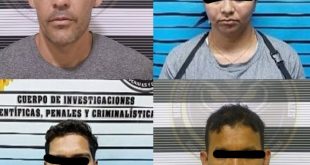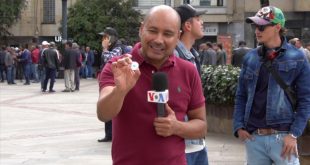Pope Francis was still in a critical condition on Sunday and blood tests show early renal failure, but remains alert and «well -oriented» and attended Mass, said the Vatican, while the 88 -year -old pontiff fights pneumonia and a pulmonary infection complex.
In a late update, the Vatican said that Francisco had not had more respiratory crises since Saturday night, but still received high supplementary oxygen flows.
Some blood tests showed «mild initial renal failure», but doctors said it was under control. The reduced platelet count, necessary for coagulation, which was first detected on Saturday remained stable.
«The complexity of the clinical picture and the necessary wait for pharmacological therapies to provide some feedback dictates that the prognosis remains reserved,» the doctors concluded.
«The night passed peacefully, the Pope rested,» said Vatican spokesman Matteo Bruni, in an early statement.
On Saturday, Francisco suffered a prolonged asthmatic respiratory crisis that required «high flows» of oxygen to help him breathe through a nasal tube.
He also received blood transfusions after the tests showed a low platelet count, which are necessary for coagulation, the Vatican said. Doctors said on Saturday that their forecast was «reserved.»
They have indicated that Francisco’s situation is uncertain, given his age, fragility and pre -existing pulmonary disease. His condition has revived speculation about what could happen if it is unconscious or disabled In some other way, and if I could give up.
Prayers for the Pope in the Vatican
Francisco had to celebrate a mass on Sunday morning in the Basilica of San Pedro and order deacons as part of the commemoration of the Holy Year of the Vatican.
The organizer of the Holy Year, Archbishop Rino Fisichella, headed the Mass in his place and offered a special prayer for Francisco from the altar before pronouncing the homily that the Pope had prepared.
«Even if he is in a hospital bed, we feel Pope Francis near us, we feel it present among us,» Fisichella told the hundreds of deacons dressed in white.
A message that Francisco had prepared in advance for his midday prayer on Sunday, but did not pronounce, said: “I continue with confidence my hospitalization at the Gemelli hospital, carrying out the necessary treatment; And rest is also part of the therapy! ” The message mentioned the next anniversary of Russia’s invasion to Ukraine, «a painful and shameful occasion for all humanity.»
The main threat is a sepsis
Doctors have warned that Francisco’s main threat would be the appearance of sepsis, a serious blood infection that can occur as a complication of pneumonia. Until Friday, there was no evidence of any sepsis, and Francisco was responding to the various medications he is taking, said the Pope’s medical team in his first detailed update about the Pope’s state.
The blood tests on Saturday showed that he had developed a low platelet count, a condition called platelet or thrombocytopenia. Platelets are fragments similar to cells that circulate in the blood and help form clots to stop bleeding or help heal wounds. Low platelet counts can have various causes, including the side effects of medicines or infections, according to the National United States Institutes.
Francisco, who has chronic pulmonary disease and is prone to bronchitis in winter, was admitted to the Gemelli hospital on February 14 after a bronchitis worsened for a week.
Doctors first diagnosed a complex viral, bacterial and fungal respiratory infection, and then the appearance of pneumonia in both lungs. They prescribed «absolute rest» and a combination of cortisone and antibiotics, along with supplementary oxygen when you need it.
Francisco’s recent reforms suggested that he knew that he was getting older and more fragile.
Last year he reviewed the funeral rites that will be used after his death, simplifying the rituals to emphasize his role as a mere bishop and allowing the burial outside the Vatican according to his wishes. But the central elements of the rites remain, including the three key moments that must be observed between the death of a Pope and his funeral: at his home, in the Basilica of San Pedro and in the place of burial.
In December, Francisco created 21 new cardinals. All but one were under 80 years of age and, therefore, eligible to vote in a conclave to choose their successor. His additions brought the total number of cardinals of vote to 140, well above the limit of 120 established by San Juan Pablo II.
But several of the current voters turn 80 this year, which will reduce the number.
Earlier this month, once he was already sick, Francisco decided to extend the five -year mandate of the current dean of the Cardinals College, Cardinal Giovanni Battista Re, 91, instead of giving way to someone new.
As represented in the film «Conclave», the dean of the Cardinals College plays an important role in the life of the Catholic hierarchy and is a crucial figure during the transition between a papacy and the next.
Francisco also decided to extend the mandate of the Vice Dean, the Argentine cardinal Leonardo Sandri, 81.
#Pope #Francis #critical #condition #early #renal #failure #remains #alert
Source link
 Latest Breaking News Online News Portal
Latest Breaking News Online News Portal



